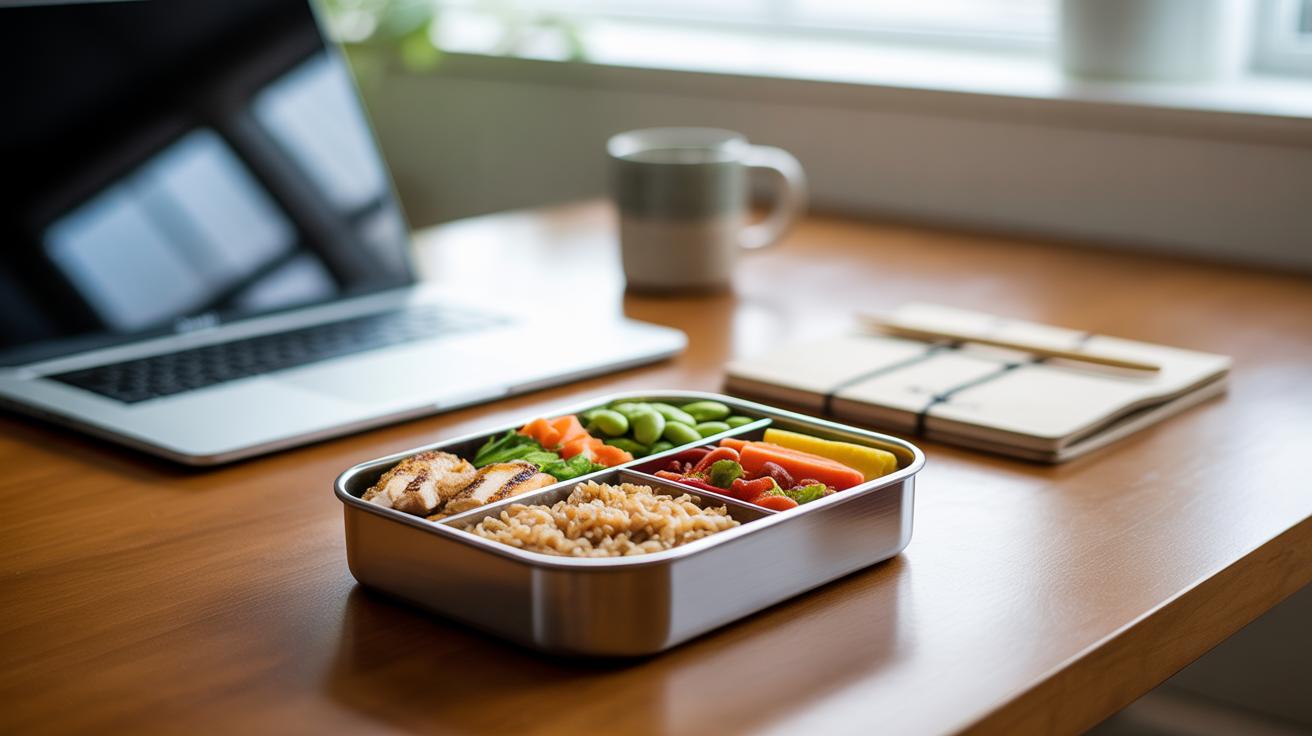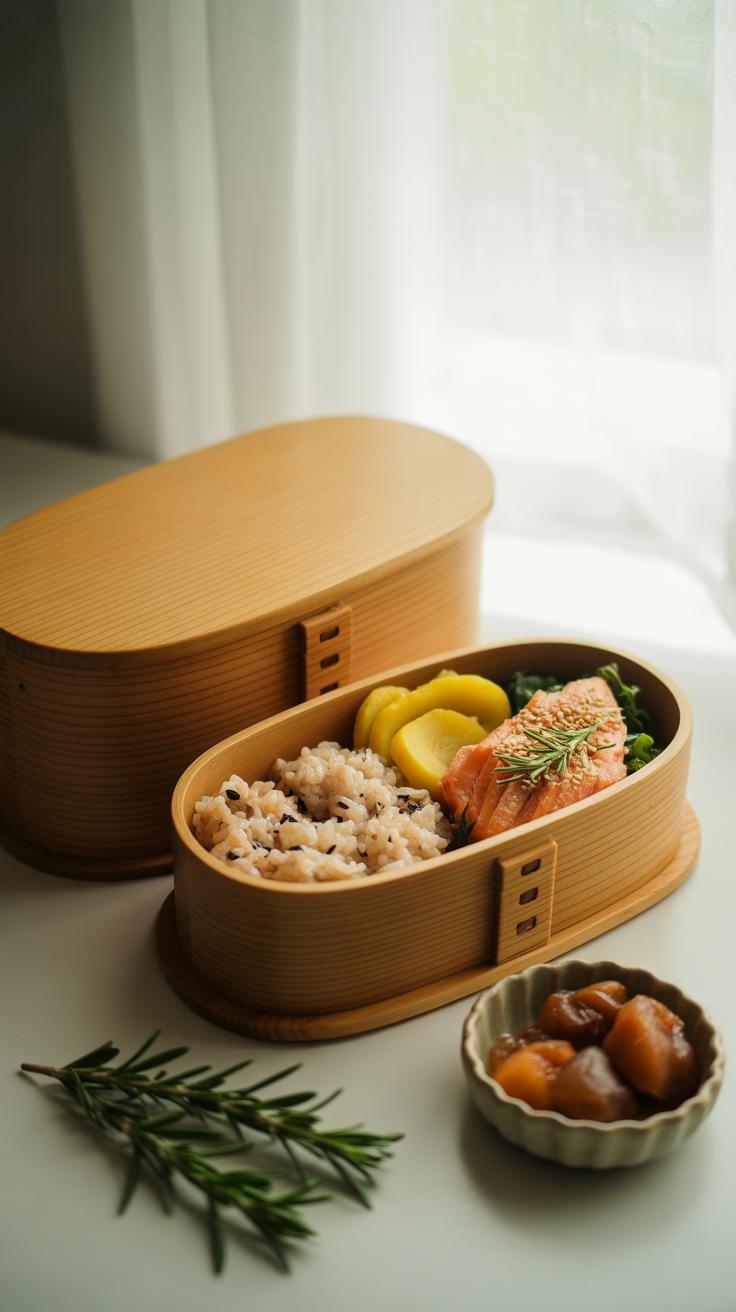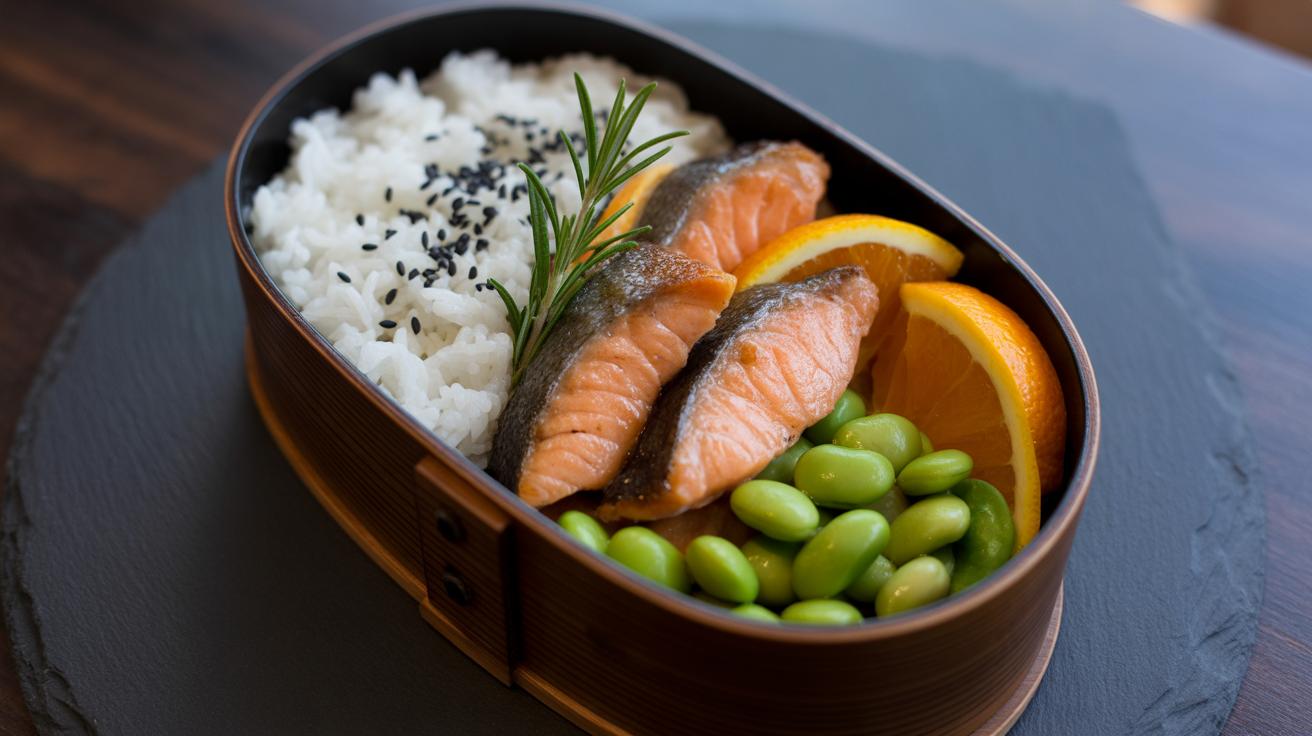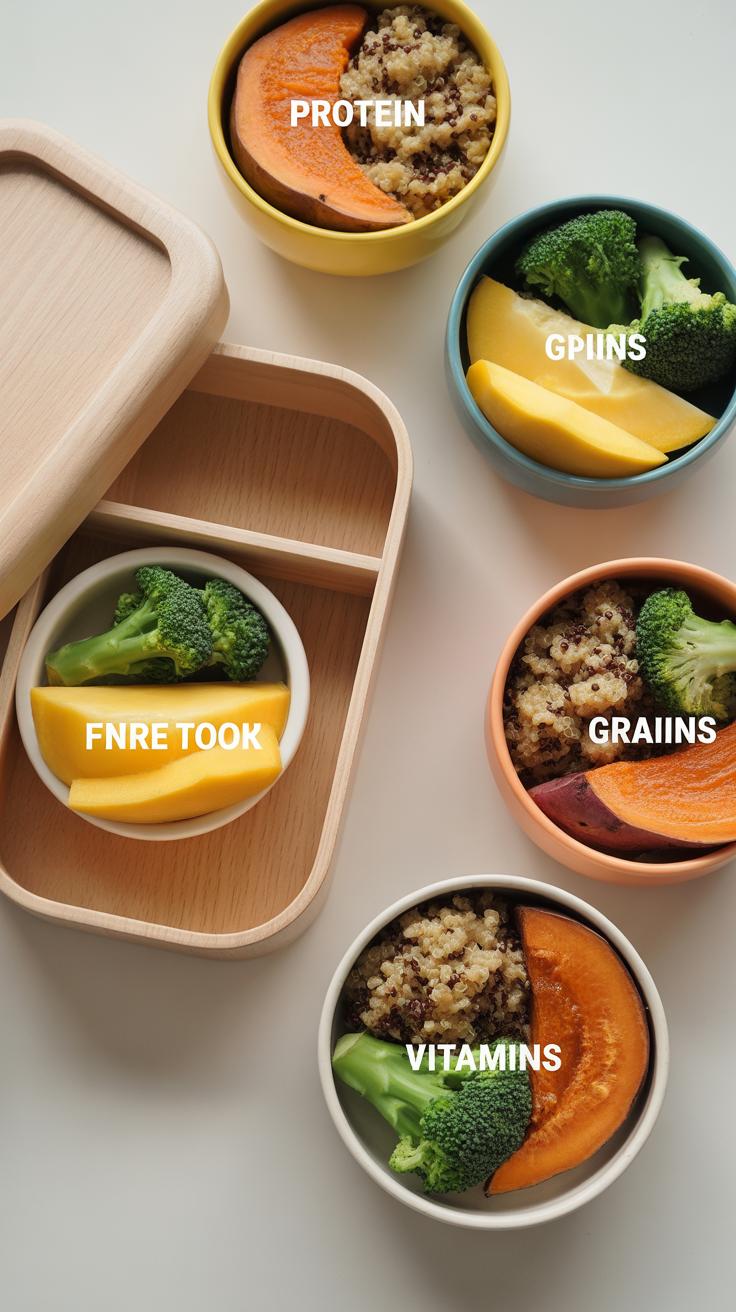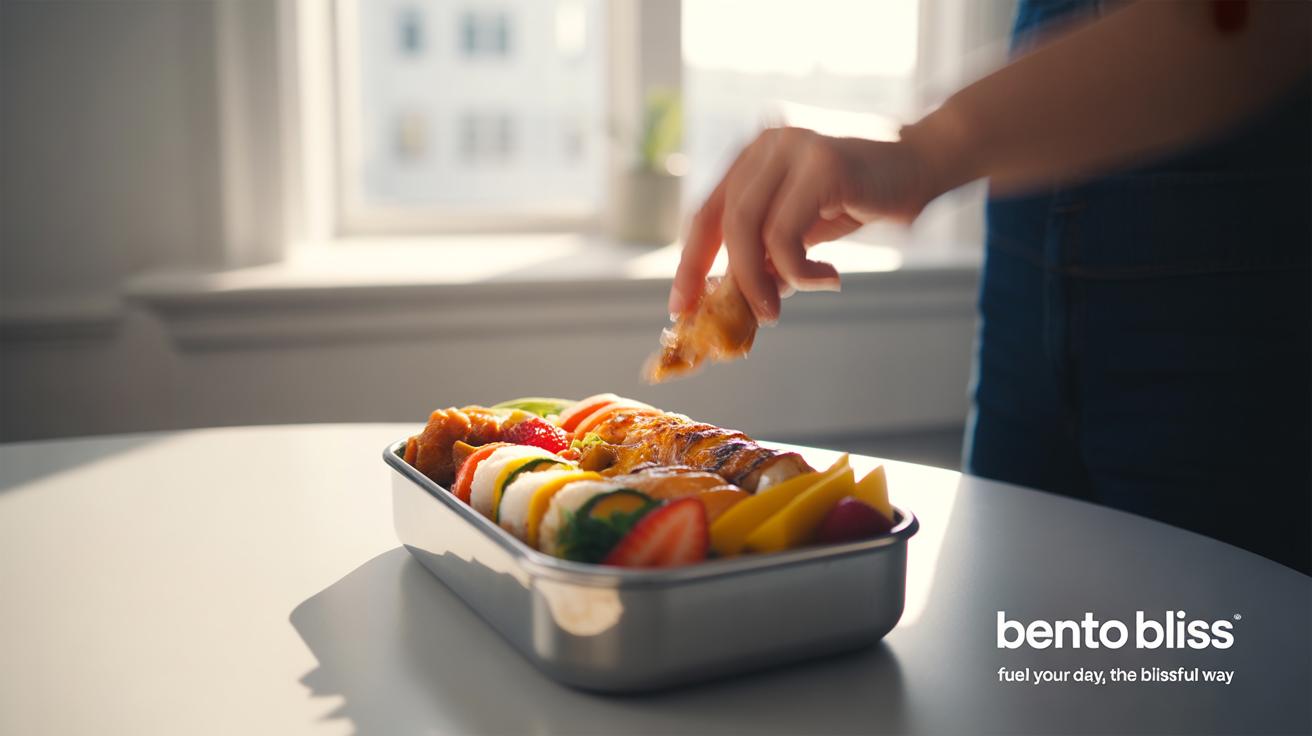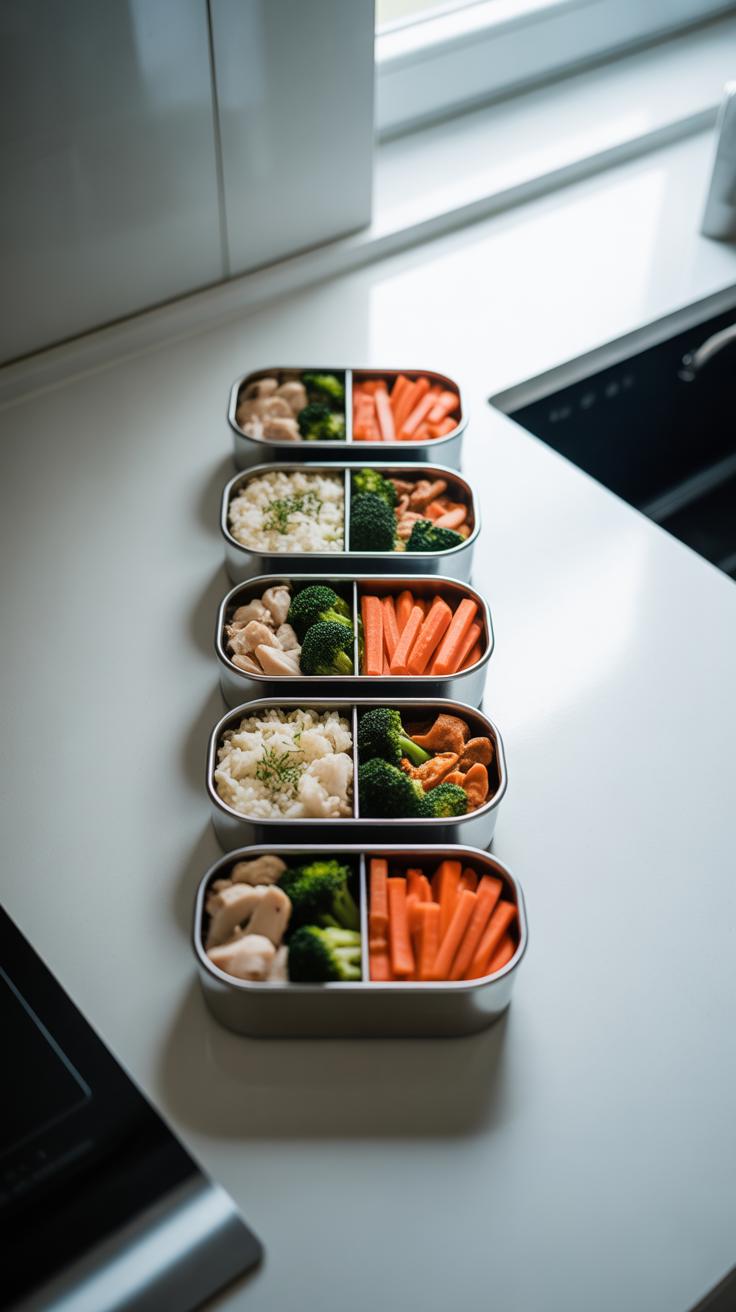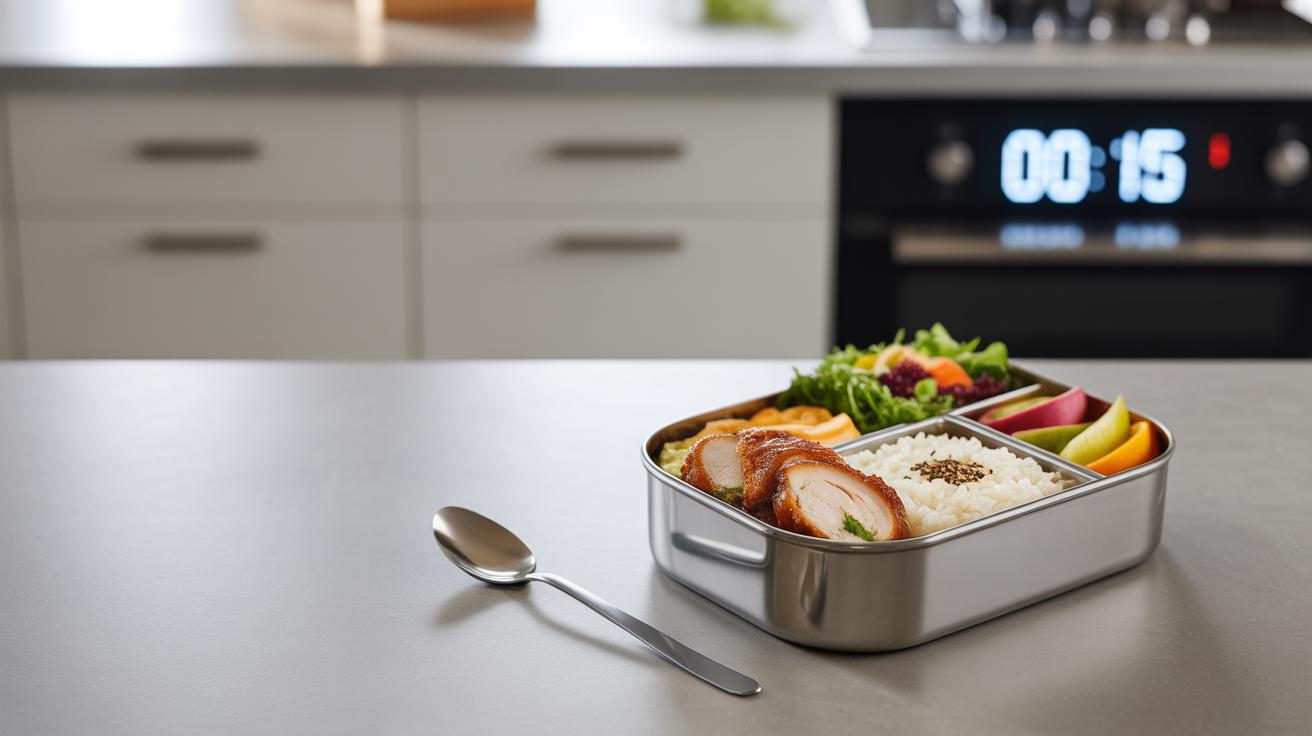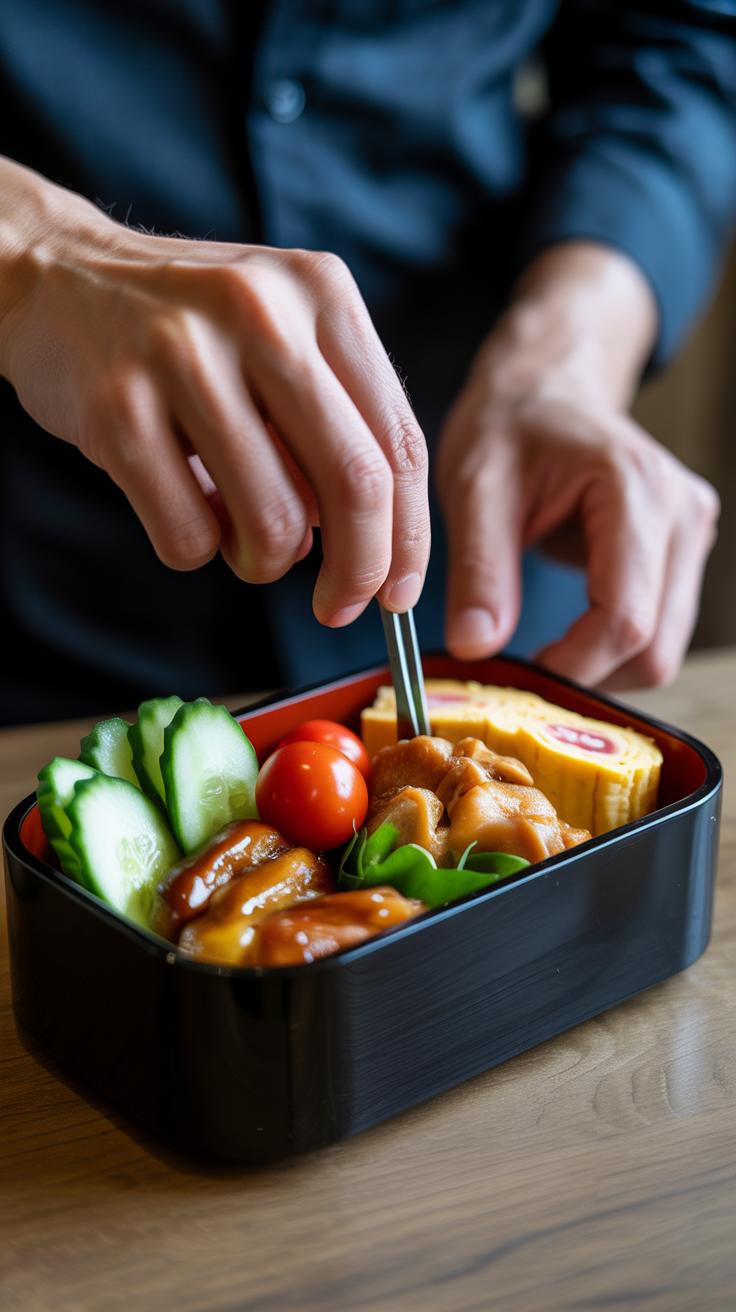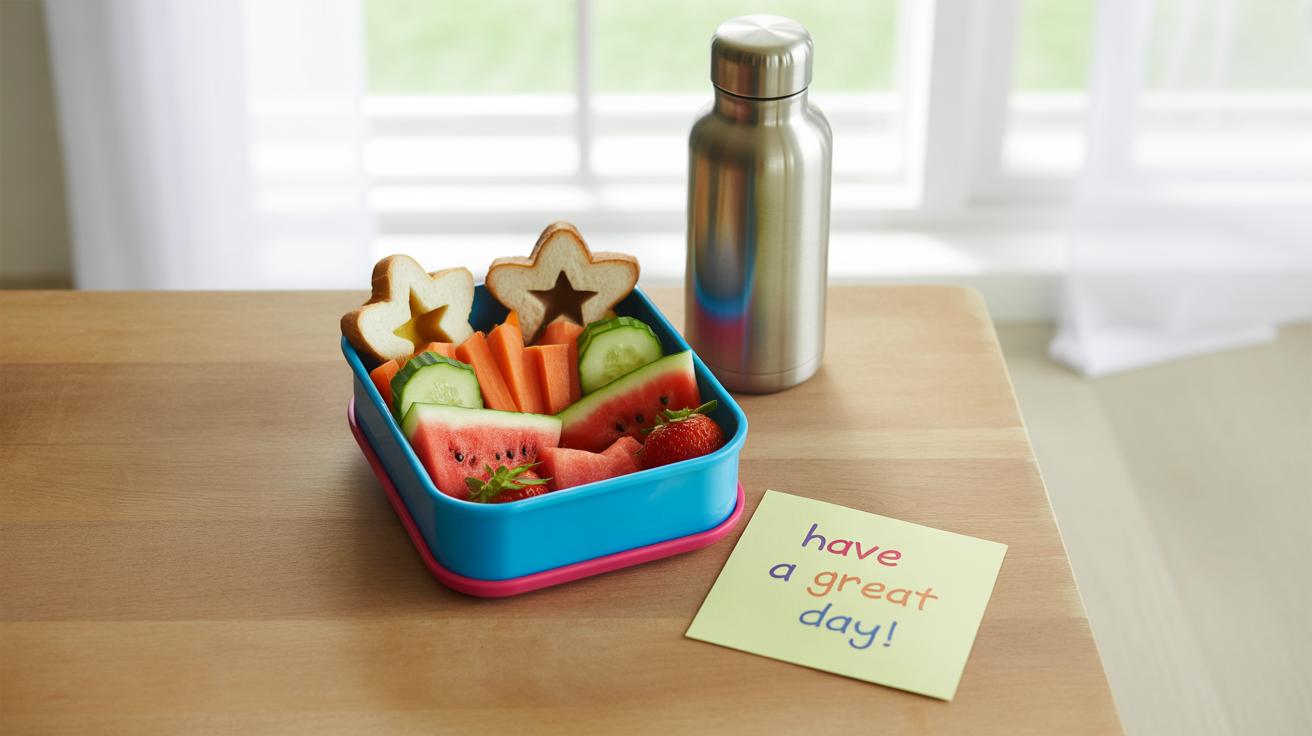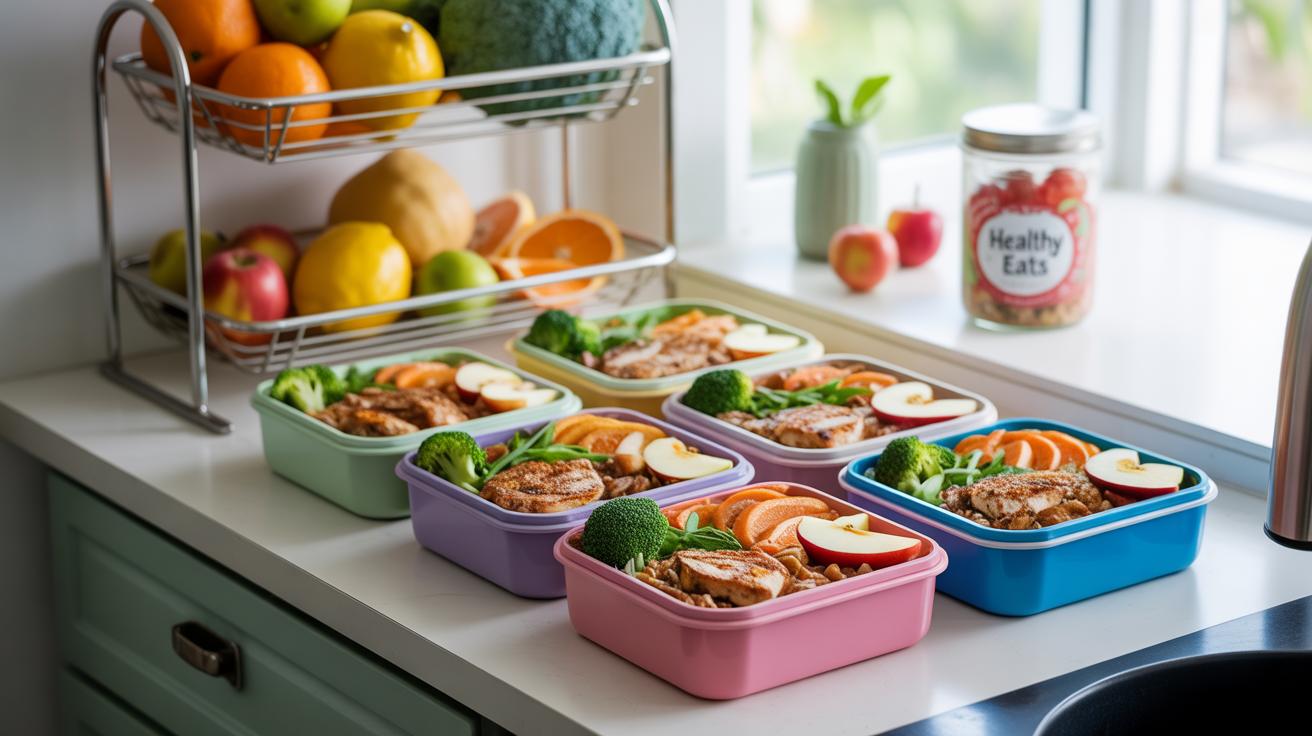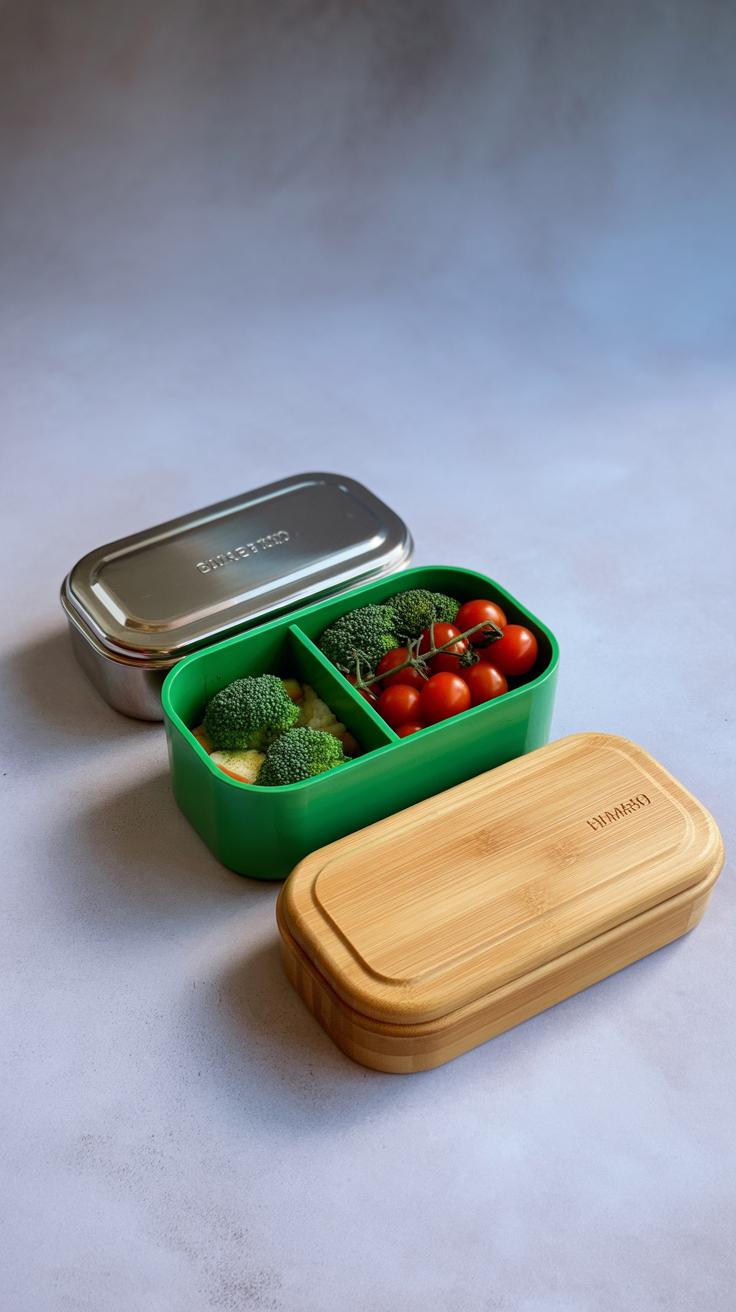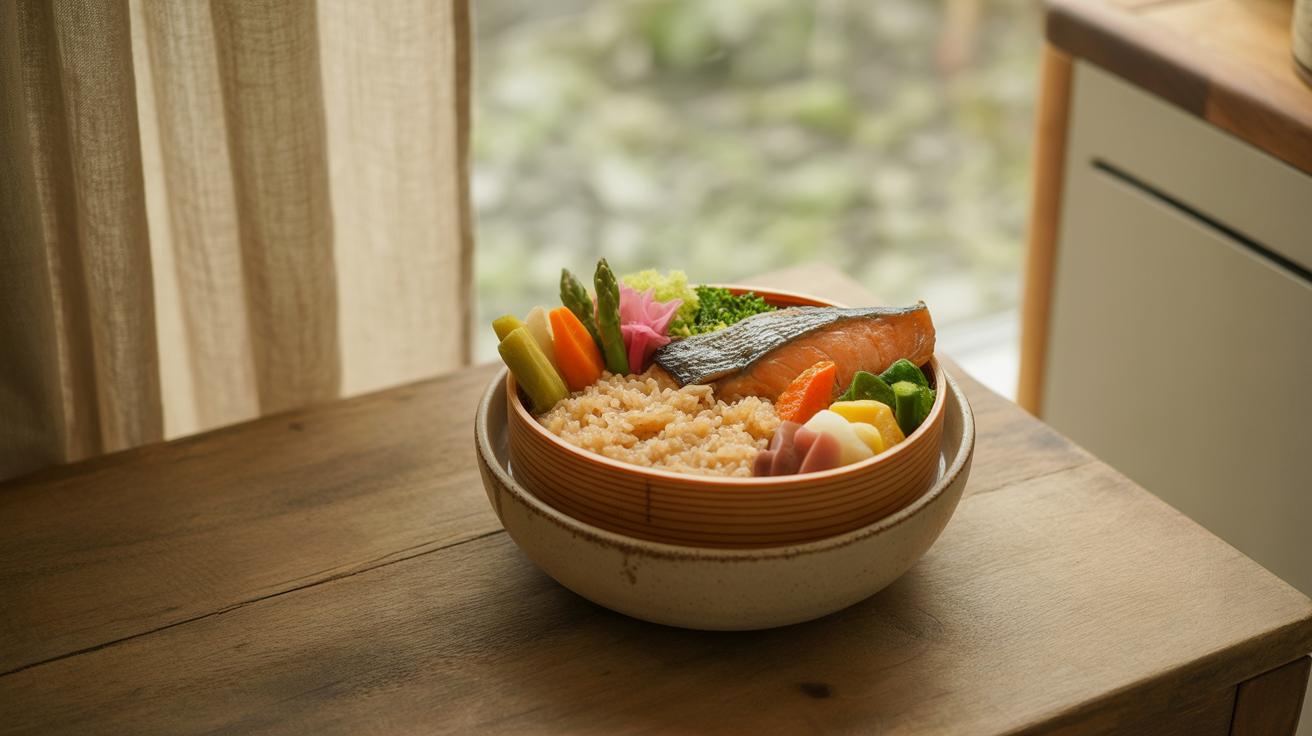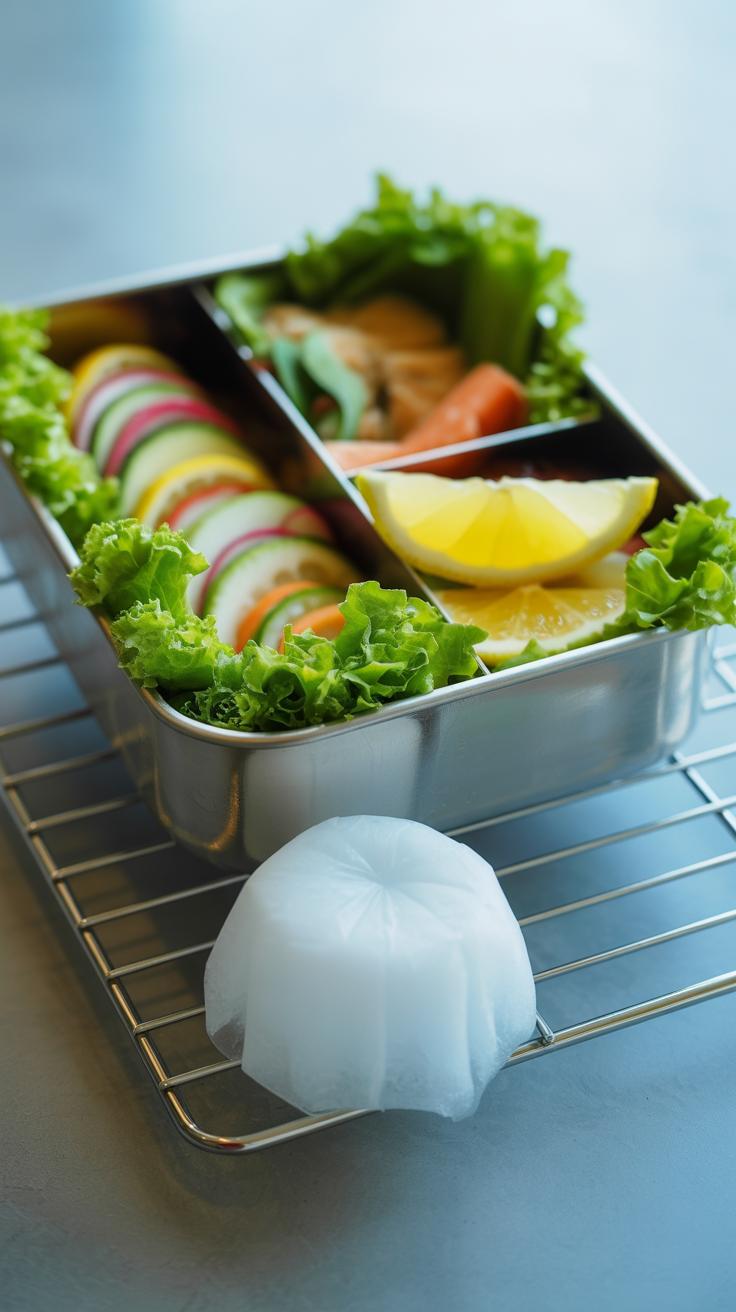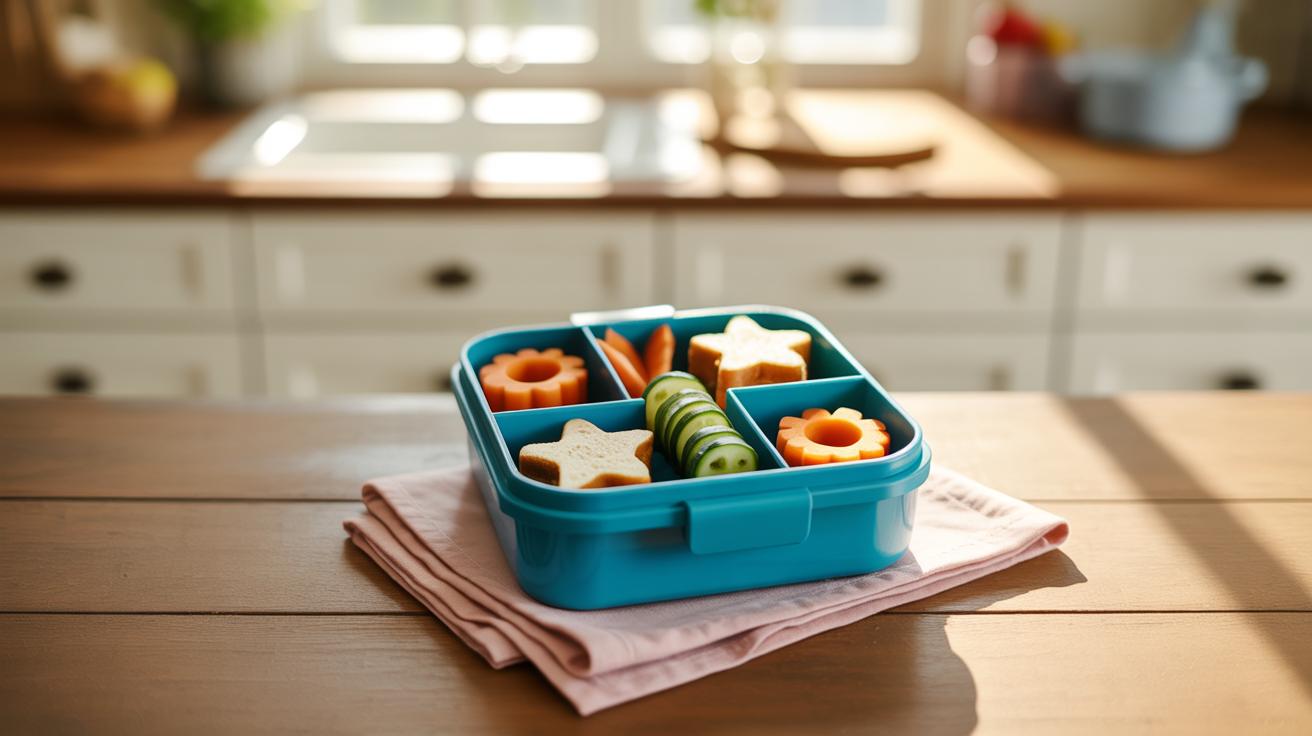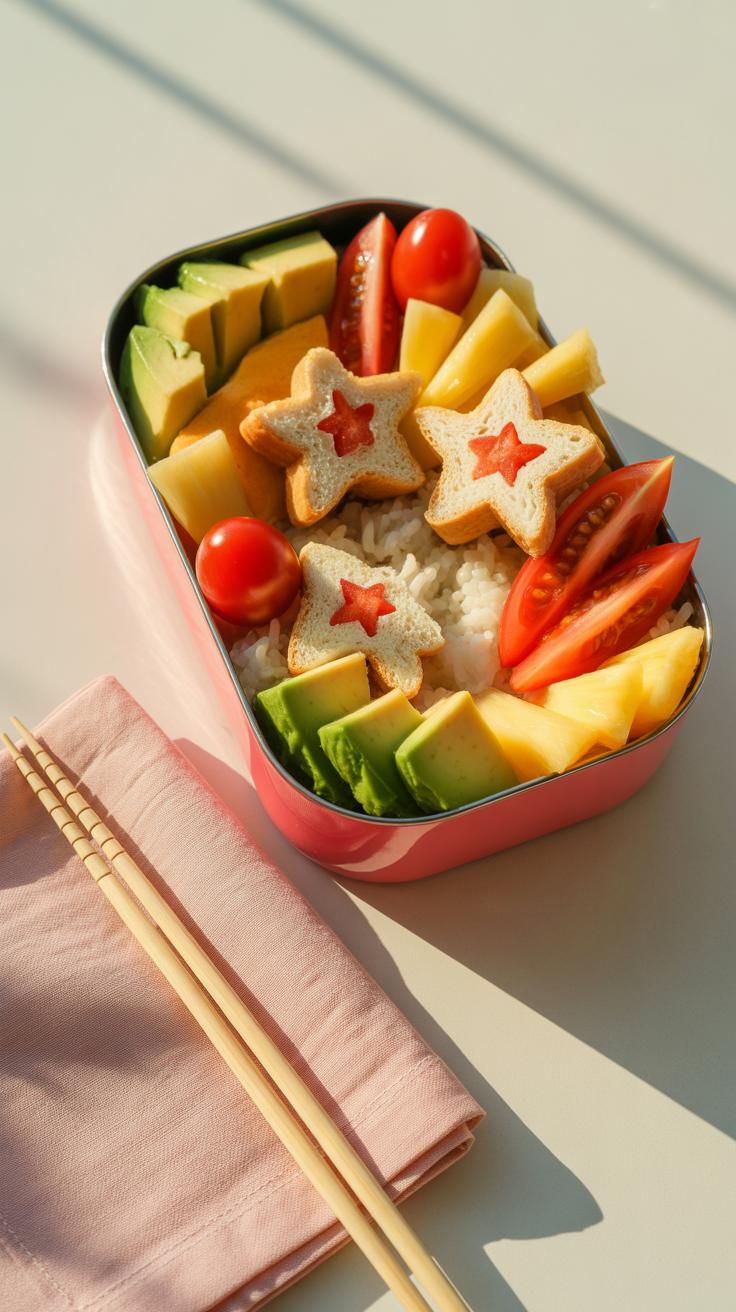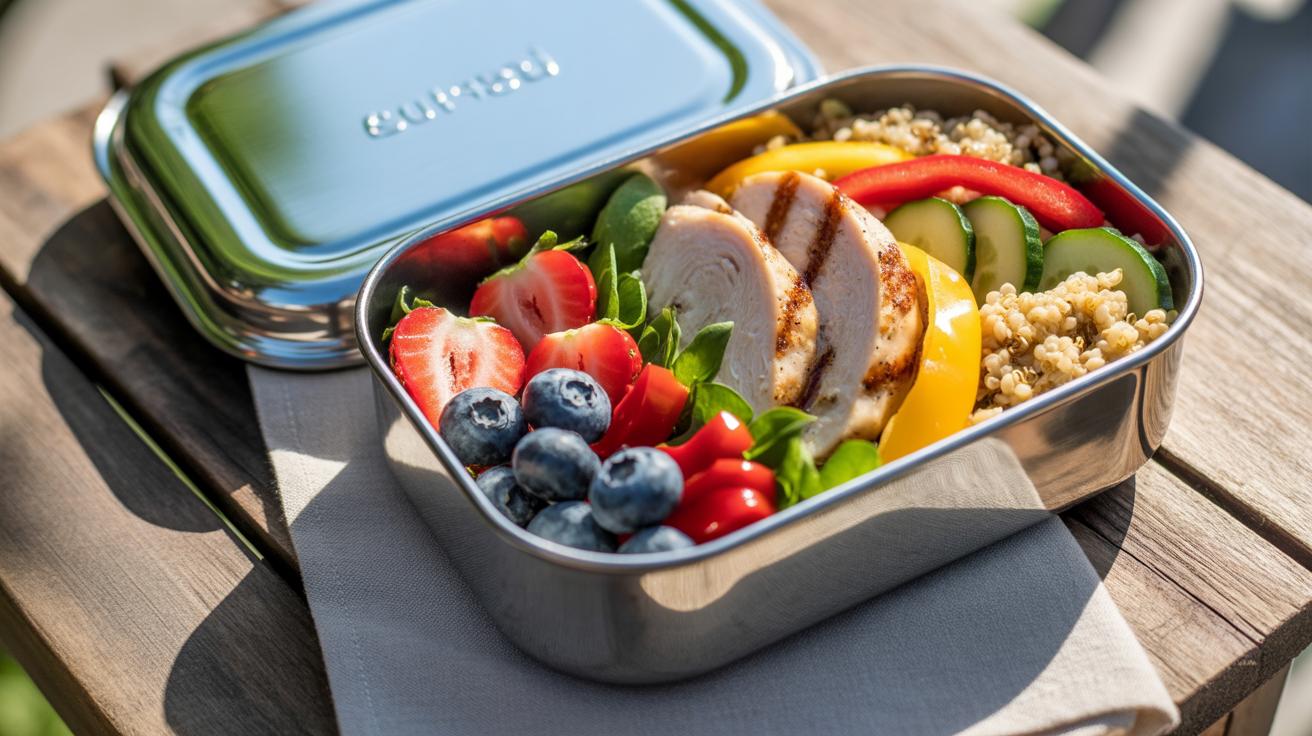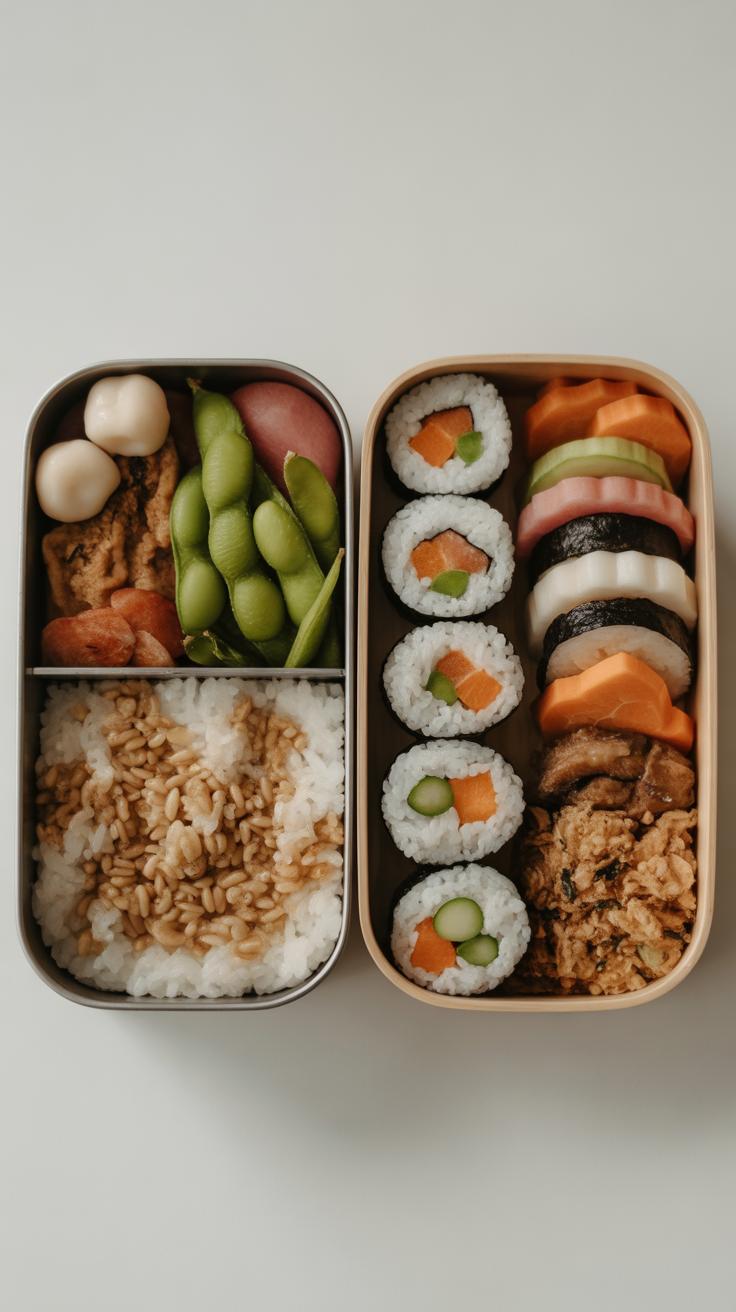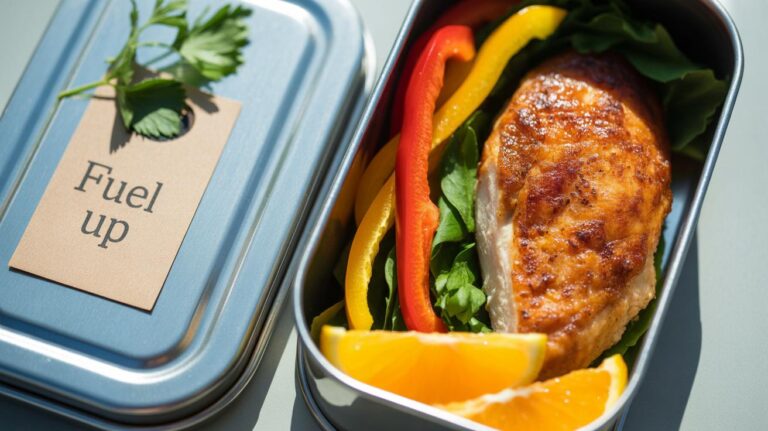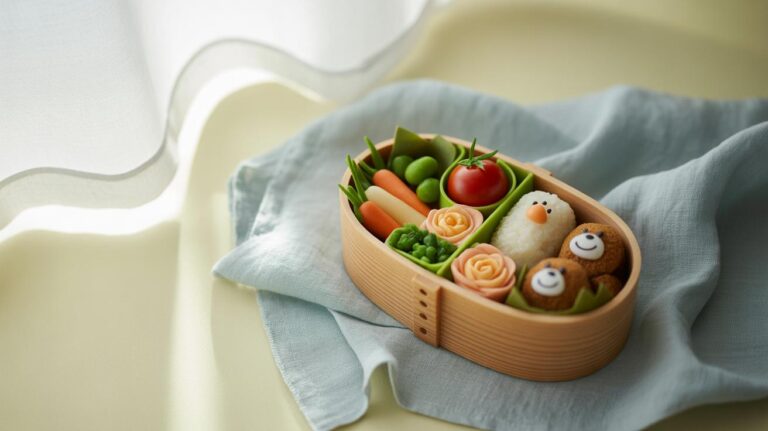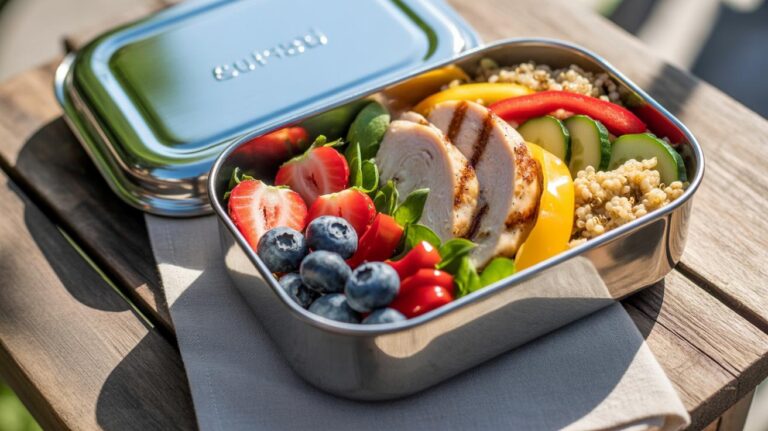Introduction
Quick Bento Box Lunch For Adults Ideas To Power Your Workday offers a great way to enjoy a healthy, balanced, and satisfying meal during your busy day. Bento boxes originated in Japan and consist of a packed meal with rice, protein, and vegetables, all neatly arranged in sections. This makes them both practical and visually appealing.
Using a bento box for your lunch helps you control portions and encourages variety. In this article, you will find useful tips and ideas to prepare bento box lunches that fit your lifestyle, save time, and keep your energy up for the rest of the day.
Understanding the Bento Box Tradition
The bento box has its roots deep in Japanese culture, dating back centuries when people began packing meals for convenience during travel or work. Originally, it was a simple container holding rice and a few other items to fuel the day. What stands out is its focus on practicality—easy to carry and eat, with a neat division of food that rarely mixes flavors.
At the heart of a traditional bento are three main components: rice, a form of protein such as fish or meat, and vegetables. These parts create balance not just in nutrition but in taste and texture, which I find quite thoughtful. This practice emphasized not just feeding the body but providing a visually appealing and satisfying meal in a compact form.
The bento’s popularity rose over time, evolving from humble meals packed in leaves or simple boxes to beautifully arranged lunches often seen in lacquered or compartmentalized containers. It became a symbol of care, especially when prepared by family members for loved ones at school or work.
In modern times, bento boxes fit surprisingly well with busy lives. They suit adults who need a quick, balanced lunch that’s more wholesome than a typical fast-food grab. The convenience and portion control—plus the option to tailor ingredients—make bento boxes a practical lunch choice. Have you ever noticed how much easier it feels to stay on track with meals when the food is already portioned and ready to go?
Essential Components of a Bento Box Lunch
A well-rounded bento box isn’t just a random mix of foods tossed together. It needs a thoughtful balance of carbohydrates, proteins, fats, and plenty of vegetables to keep you going through your workday. Carbohydrates give you that quick burst of energy, but if you rely only on carbs, you might crash mid-afternoon. Including proteins helps slow digestion and provides longer-lasting fuel. Fats, meanwhile, are crucial too—they support brain function and keep you feeling full.
Many adults aiming for a satisfying lunch might neglect fats entirely, maybe thinking they’ll slow digestion or add unwanted calories. But moderate amounts, like a small portion of avocado or a few nuts, can actually improve the whole meal.
Vegetables and fruits deserve a spot in every bento box. Not just for color or crunch, they pack fiber, vitamins, and antioxidants. Tossing in easy options—like cherry tomatoes, baby carrots, or apple slices—can be a game changer. They add a refreshing contrast and help avoid that sluggish post-lunch feeling.
So ask yourself: does your bento box cover all these bases? If it feels like something’s missing, try adjusting the portions. Maybe a scoop of quinoa for carbs, grilled chicken or tofu for protein, a few olives or a drizzle of olive oil for fats, and a side salad or steamed broccoli for those essential greens. The goal is to create a box that’s not just edible but truly energizing—without requiring too much fuss in preparation.
Planning Your Bento Box Lunch for the Week
Planning multiple bento lunches ahead can feel a bit overwhelming at first, but it really pays off during a hectic workweek. Start by choosing a few proteins you enjoy—something that keeps well in the fridge and can be used in different ways. Think grilled chicken, boiled eggs, or tofu. Cook these in batches once or twice a week to cut down on daily prep time.
Vegetables can usually be cooked or prepped in advance too. Steamed broccoli, roasted carrots, or raw cucumber slices store well if kept in airtight containers. You might find yourself rotating between raw and cooked veggies for different textures and flavors.
When it comes to storage, separate your components rather than packing everything together. Use small containers or silicone cups inside your bento box to avoid sogginess. Pack dressings or sauces on the side to keep things fresh.
For variety, sketch out a simple weekly menu before shopping. This doesn’t have to be complicated. List your main proteins, some veggies, and a couple of carbs like rice or quinoa. Mix and match across the week—perhaps chicken with quinoa and steamed greens on Monday, then tofu with roasted sweet potatoes and salad on Tuesday. It helps reduce lunch boredom and makes your shopping list straightforward.
Remember, planning isn’t about perfect meals every day but saving time, reducing waste, and keeping you nourished. Have you noticed how much easier your lunch breaks feel when you don’t have to think about what to eat?
Quick and Easy Bento Box Lunch Recipes
When it comes to preparing bento lunches quickly, it’s helpful to keep the recipes simple and flexible. For instance, grilled chicken thigh pieces seasoned with just salt, pepper, and a little garlic powder can be tossed into your bento box alongside cooked rice and a handful of cherry tomatoes. This kind of recipe doesn’t demand much time, but still packs flavor.
Another idea: hard-boiled eggs paired with steamed veggies and a small portion of quinoa or couscous. These elements hold up well through the day, and they’re satisfying without needing reheating. You might find leftovers from dinner fold seamlessly into your lunchbox too.
Don’t hesitate to prep small snack-sized portions of things like pickled cucumbers or edamame. They add texture and freshness without complicating your prep time. Really, the secret is to choose ingredients that travel well and don’t become soggy or lose their appeal.
Protein-Packed Bento Ideas
If protein is your focus, there are several quick recipes you can try. For example, sesame-coated tofu cubes that bake in 20 minutes or pan-seared salmon fillets with a lemon glaze are great options. Both taste better cold or at room temperature, which suits a packed lunch setting.
Chicken, as usual, is a reliable go-to. Think shredded rotisserie chicken mixed with a light soy-ginger dressing placed alongside steamed broccoli and a few carrot sticks. It’s easy to make in bulk and keeps well.
Don’t overlook canned tuna or salmon for days when you need an ultra-quick fix—you can combine it with avocado slices and cucumber for a no-fuss yet nourishing meal.
Vegetarian and Vegan Bento Box Options
Vegetarian and vegan choices don’t have to be boring or complicated. Roasted chickpeas tossed with spices offer protein and crunch. Pair those with a quinoa salad loaded with chopped bell peppers, parsley, and a splash of lemon juice. It’s fresh and filling.
Simple spiralized zucchini noodles with a drizzle of pesto or tahini dressing also fit well and are easy on prep time. You might want to add some steamed edamame or baked sweet potato cubes for extra substance.
One could even experiment with layered hummus, shredded carrots, and olives. These ingredients layer neatly in a bento box and provide a variety of tastes and nutrients without making the meal feel heavy.
Choosing the Right Bento Box Container
When picking a bento box container, size matters—but don’t just focus on volume. Think about how much you usually eat and if you prefer a light snack or a full meal. Bento boxes come in various sizes, from compact ones that fit a simple sandwich and fruit to larger options with multiple tiers for complex lunches.
Compartments can make a big difference. Some bento boxes have fixed sections, others come with removable dividers. These compartments not only keep your foods separate but also nudge you to control portions without actively measuring. Sometimes, I’ve found smaller compartments push me to add a bit more veggies rather than overwhelming carbs.
Material choice affects care and convenience. Plastic bento boxes are lightweight and often budget-friendly but might stain or retain odors. Stainless steel containers feel sturdier and avoid staining—though some don’t microwave well. Glass designs are heavier but offer easy cleaning and don’t hold smells. Remember to check if the container seals tightly; leaks can turn your lunch into a mess.
Ease of cleaning also plays a role. Does the box fit in your dishwasher? Are the compartments easy to separate? A complicated design might make you skip using it altogether. Picking the right bento container comes down to balancing your daily habits with practical needs. Sometimes, the simplest option turns out to be the most reliable for busy days.
Tips for Keeping Your Bento Lunch Fresh and Tasty
Packing a bento lunch that stays fresh and tasty isn’t always straightforward, especially when you’re juggling a busy schedule. One approach that works well is to separate ingredients carefully. Using dividers or small containers inside your bento can prevent moisture from leaking into dry foods, which often leads to sogginess. For example, placing crisp veggies away from dressings makes a noticeable difference. You might even find a simple silicone cup or reusable divider valuable for this.
Also, think about how you pack sauces or wet items. Packing these in tiny sealed containers will save your rice or sandwiches from becoming mushy. It’s easy to underestimate how quickly flavors can mix and turn less appealing, so some trial and error here is normal.
When it comes to storing your bento, refrigeration is key if you’re not eating it right away. Keep your box chilled as long as possible. If fridge access is limited at work, consider using an insulated lunch bag with an ice pack. That little extra cooling help really keeps foods safer and fresher in the hours leading up to lunch.
Reheating is another tricky area. Some bento ingredients lose their texture or flavor after a microwave blast. Try reheating only the parts that benefit from warmth, while leaving other elements cold or at room temperature. For example, reheat steamed veggies or proteins separately, then combine with fresh ingredients just before eating. Stirring halfway through reheating often helps heat evenly and keeps the meal enjoyable.
Have you noticed that reheated rice sometimes gets tough or dry? Adding a small splash of water or covering the container loosely during microwaving can prevent that. It’s little tweaks like this that help maintain your bento’s taste, making your lunch feel less like leftovers and more like a planned meal.
Making Bento Box Lunches Enjoyable
When preparing your bento lunch, presentation plays a bigger role than you might expect. The way you arrange your food pieces and choose colors can make the meal more inviting, even when you’re eating alone at your desk. Imagine how a bright splash of red from cherry tomatoes or a pop of green from sliced cucumber can catch your eye and make you more eager to dig in.
Try to mix shapes and textures as well—maybe small cubes of cheese alongside thin carrot sticks, or a handful of edamame next to a warm grain. These little contrasts break the monotony and give your eyes something to explore. You don’t need fancy dividers; a neat layout often works just as well.
Also, think about adding personal touches that speak to your tastes or memories. A tiny note tucked inside, a favorite dipping sauce in a small container, or a bite-sized treat you just love can lift the whole experience. It’s these small details that can make each lunch feel a bit special, turning a simple midday meal into something genuinely enjoyable.
Have you tried including a favorite spice or a comfort food element in your bento? Sometimes, mixing practicality with a small indulgence makes all the difference in making lunchtime something to look forward to. Don’t hesitate to experiment with what feels right for you, even if it seems a bit unusual at first.
Overcoming Common Challenges with Bento Lunches
Bento lunches sound great in theory, but they can feel tricky when time is tight. You might find yourself staring at an empty fridge on a rushed morning, wondering how to pull together something balanced and tasty. One way past this is meal prepping. Spending a bit of time on weekends chopping veggies, cooking grains, or portioning proteins can speed up morning assembly. Even prepping just a few staples can shave off precious minutes.
Dealing with dietary restrictions? Bento boxes are actually flexible. Whether gluten-free, low-carb, or vegetarian, you can swap ingredients without losing variety. For example, instead of bread or rice, try quinoa or spiralized veggies. And don’t shy away from mixing flavors and textures to keep meals interesting. It’s easy to fall into a rut, but small tweaks can keep things fresh.
Monotony creeps in fast, especially if you use the same ingredients daily. One idea is to keep a list of go-to snacks or sides and rotate them weekly. Maybe you would like hard-boiled eggs one day and a few olives the next—or a different dressing on your salad. Bento lunches don’t have to be perfectly balanced every single day, so don’t stress if you repeat some favorites. What matters most is finding what works for you, even if it’s a little imperfect.
Conclusions
Choosing to prepare quick bento box lunches can improve your daily routine by saving time and promoting healthier eating habits. The variety of ingredients ensures you receive a balanced mix of nutrients necessary to keep you going through your workday. Experiment with different foods to keep your lunches interesting.
By following simple steps to plan and prepare your bento lunches, you can enjoy meals that taste good, look nice, and support your health. Take control of your lunch today and see how a bento box can power your workday.

